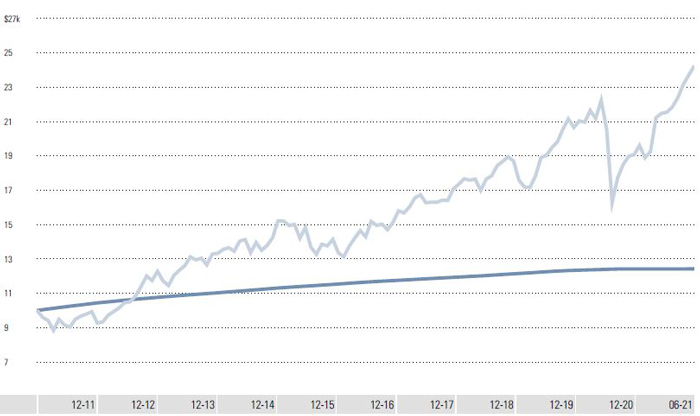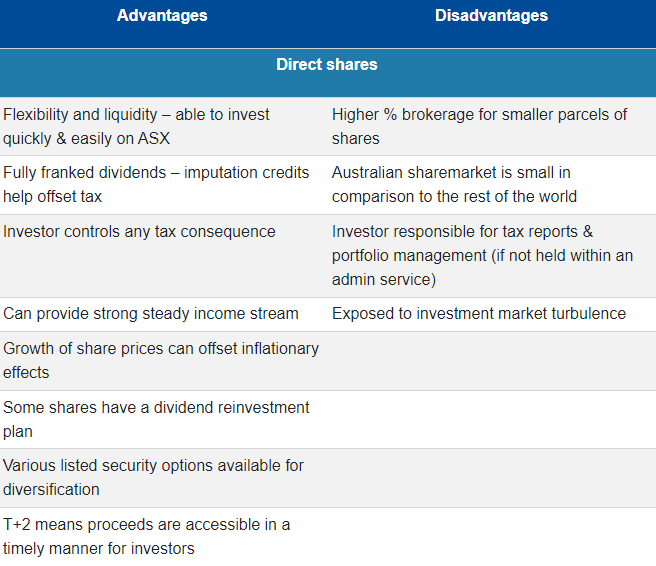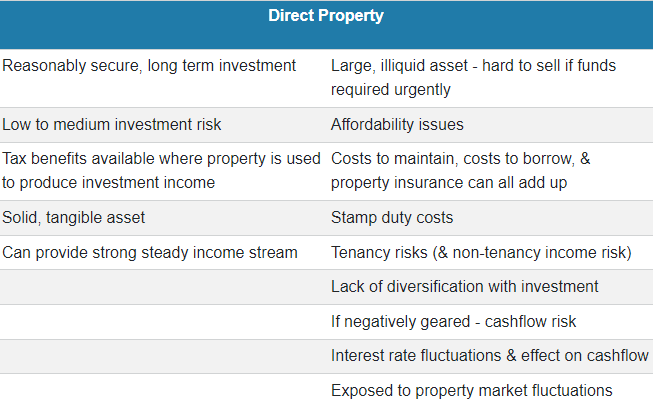Investment Watch: Spring 2025 Outlook
Investment Watch is a quarterly publication offering insights into equity and economic strategy. This edition explores expected interest rate trends, their impact on asset allocation, and highlights key Australian sectors and tactical opportunities.
Investment Watch is a quarterly publication produced by Morgans that delves into key insights for equity and economic strategy.
This publication covers
Economics - 'A comparative outlook on the Fed and RBA'
Asset Allocation - 'Countering uncertainty'
Equity Strategy - 'Broadening our portfolio exposure'
Banks - 'Price strength compresses potential returns'
Industrials - 'Wild swings'
Resources and Energy - 'Sentiment turning'
Technology - 'Buy quality when opportunities arise'
Consumer Discretionary - 'Encouraging medium-term signs'
Telco - 'Defensive attributes remain attractive'
Infrastructure - 'Attractive, but with limited opportunities'
Property - 'An improving cycle'
Recent Intiations
As we approach Q4, we maintain our positive view on investment markets, grounded in the expectation of slowing but still positive global growth. The shift in market dynamics is driven by the resumption of US Fed rate cuts and the continued acceleration of tech innovation and productivity gains. We think these factors will mitigate the impact of ongoing economic challenges and geopolitical volatility. This quarter, we map the outlook for interest rates and how this shapes our asset allocation decisions. We also provide an outlook for the key sectors of the Australian market and where we see the best tactical opportunities
Morgans clients receive exclusive insights such as access to our latest Investment Watch publication. Contact us today to begin your journey with Morgans.
With interest rates the lowest we have seen for years (for many, ever), the debate about whether we should be paying down non-deductible debt first or funding additional superannuation contributions is once again topical.
What is the best strategy?
In reality there is no right or wrong answer as it depends on the circumstances for each person or family. Some of the issues that would need to be considered are
- personal income tax rates
- age and how close you are to retirement
- single or family status
- level of debt
- desire for financial security (or certainty of the outcome)
Generally, a younger couple taking on a home loan could be more inclined to pay off as much of the debt as possible if surplus funds are available. Superannuation may not be on their radar given the length of time before they could access funds. If the younger couple are thinking about starting a family the current low-rate environment provides a great opportunity to get ahead in loan repayments should they have to move to one income.
An already established family may want to use the time to get ahead as much as possible with their loan repayments in case unexpected expenses occur in the future e.g. education costs, home renovations or a new family car.
A person, or couple, closer to retirement, however, may view super contributions as the better strategy to maximise returns on investment. Investing more into superannuation, with the ability to generate higher returns compared to repaying a lower rate of debt, could be a more effective strategy particularly if the person, or either of the couple, is on a high marginal tax rate. Salary sacrificing or deductible self-employed contributions, depending on the person's work status, may be a more attractive strategy for utilising surplus cashflow.
Case Study
Maggie has reached her preservation age of 57 years (date of birth: 7 February 1962). Her financial situation is:

Repaying Home Loan First
Maggie could use her surplus cash and increase loan repayments each year by $30,000 up to retirement. It is estimated her debt will be completely repaid by age 65, allowing Maggie to retire debt free.
Maximising Super Contributions First
Alternatively, Maggie could maximise her super contributions by contributing $30,000 each year until retirement into her super fund. Contributions could be a mix of concessional (deductible) and non-concessional contributions. At retirement at age 65, any debt outstanding could be repaid by withdrawing a tax free amount from super.
There may be other strategies available to pre-retirees which may also provide greater flexibility to enhance savings. Strategies such as a transition to retirement pension could be an option if preservation age has been reached. Salary sacrificing into super may be used in conjunction with this pension strategy. Again, at retirement any remaining debt could be paid using tax free withdrawals from super.
Outcome
Our analysis of the two scenarios identifies maximising superannuation as the better outcome for Maggie at retirement, which is what we would have expected.
Again, however, what is right for one person may not be right for another. It really depends on the circumstances and how much 'certainty' is desired by the individual or couple. That is, paying off a home loan and seeing the debt reduce can psychology be more rewarding for some more so than others.
Analysis
Chart A : Comparison of Net Assets at Retirement (in today's dollars)

Chart B : Comparison of Investment Returns over 7 years to Retirement

Watch Now
Financial planning is an important process in helping you achieve financial success. It is a process of defining financial goals and tailoring solutions to help you reach those goals. With the right advice and a patient investment approach achieving financial success can be relatively simple.
One way to financial success is to set out a plan - and stick to it. To show you how, we’ve outlined the six key steps to kickstart your plan.
Step #1 - Ask for professional advice
Perhaps the best financial advice you will ever receive is to seek expert advice. A professional financial adviser is accredited and trained in the areas of financial planning, investment, superannuation, retirement and insurance planning. Why leave it to chance? Your financial future is too important.
Step #2 - Define your financial goals
Before you make any financial decisions you need to make your goals realistic and very clear. Ask yourself what you want to achieve. Are you saving for your first house? Your children’s education? Are you trying to build up a retirement nest egg? Or are you trying to invest that nest egg to provide an income in your retirement?
Perhaps you’re working towards a number of these goals. The more specific you can make your financial goals and objectives, the more powerful they will become and the more likely you will be to achieve them.
It’s also important to remember that as your personal circumstances and needs change, your financial goals may also change. So it is very important to do a ‘reality check’ on your goals every few years.
Step #3 - Decide on a suitable timeframe to achieve your goals
Once you’ve decided what you want to achieve the next key to successful planning is to establish some very clear and realistic timeframes within which you expect to achieve your financial goals.
Exactly when do you want to buy a house? Or when do you want to retire? Perhaps more than any other factor, the time over which you intend to invest will determine which investments are right for you.
Step #4 - Agree on an appropriate financial strategy or strategies
Your financial adviser will review and analyse all of the information you have provided in Steps 2 & 3 in order to come up with appropriate strategies that will help you achieve your goals.
Working with you, your adviser will develop a plan that will get you started on the road to financial success.
Step #5 - Select appropriate assets for investment and implement your plan
Asset allocation is the process of building a portfolio with a mix of assets that will meet your personal and financial objectives. The decisions you make (with the help of your adviser) about how much to invest in each asset class will largely determine the long-term risk and return potential of your investments.
The aim of the asset allocation process is to establish how much of your money needs to be invested in each asset class to achieve a level of risk and return that is suited to your timeframe and financial priorities. The proportions you decide to invest in each asset class becomes your ‘benchmark portfolio’.
What are the main asset classes?
There are four main classes of assets in which you can invest:
- cash
- fixed interest/bonds
- property and shares.
The asset classes that are more volatile in the short term (e.g. shares and property) have usually outperformed the less volatile asset classes (e.g. fixed interest and cash) over the long term (7 or more years).
Unfortunately, there is probably no such thing as a low risk, high return investment. This is the risk/reward trade-off and it’s the core of the investment conundrum - higher volatility is the ‘price’ you have to pay if you want higher long-term returns.
The objective of the asset allocation process is to maximise long-term returns for a given level of short-term volatility.
Your investment horizon and risk profile
To determine the right investment or mix of investments for you, you need to establish whether or not (and to what extent) your aversion to risk outweighs your appetite for reward. The answer to that question is known as your ‘risk profile’. Your risk profile will depend to some extent on your personality and priorities.
However, a more important factor is the length of time you intend to invest, because the volatility of any investment is reduced when returns are averaged out over a greater number of years. Time effectively reduces volatility, so the right investment for you largely depends on your investment timeframe or ‘investment horizon’
Once you are happy with your financial plan and/or investment portfolio your adviser will help you implement the recommendations.
Step #6 - Review your plan regularly
You need to make sure your financial plan stays on track, and your investment strategy is in line with your risk profile and objectives.
As mentioned in Step 2 your personal circumstances may change or your goals may vary over time. For this reason it is important your financial situation is reviewed regularly to capture any such changes.
Relative movements in the market for the various asset classes will change the mix of assets in your portfolio over time. Your allocation to some assets will grow or shrink relative to the others.
When this happens, you may want to ‘rebalance’ your portfolio, either by selling the assets that are outperforming or buying more in assets that are underperforming. This may sound strange but what you are doing is maintaining your original asset allocation and sticking to your benchmark portfolio.
The best person to help you review your plan is your adviser.
ASIC (Australian Securities & Investment Commission) is urging people to make a positive start to their finances by taking small steps to improve their financial position. This could be as simple as starting a budget.
Their ‘MoneySmart’ website states, “A smart investor takes time to understand the basic principles of investing, then develops, and sticks to, a sound investment plan.“
Whatever the time of year use the opportunities available to you to think about your financial position and what you can do to improve it or build upon it. Use the six basic steps outlined above and kickstart your financial plan.
Computershare (ASX:CPU) experienced a mixed performance in FY21, with management NPAT (US$284m) dipping approximately 7.5% compared to the prior corresponding period (pcp). However, the results remained broadly in line with Bloomberg Consensus (US$281m) and company guidance (-8%).
Performance Analysis
The FY21 results for Computershare can be characterized by strong performances in the Issuer Services and Employee Share Plans segments, counterbalanced by weaker results in Mortgage Services and Business Services. Despite these fluctuations, the company's FY22 EPS guidance fell slightly below expectations.
Forecast Adjustments
In light of the performance and guidance, adjustments have been made to the FY22F/FY23F EPS forecasts, reflecting a more conservative outlook on growth assumptions for the coming years.
Investment Insights
While Computershare maintains its status as a quality franchise, the current valuation reflects fair value, trading at approximately 24 times FY22F PE. As investors assess their positions, it's essential to consider the potential for growth in FY23 and beyond against the backdrop of the current market conditions.
In conclusion, Computershare's performance in FY21 presents a nuanced picture, with strengths and weaknesses across various business segments. While FY22 may see relatively flat growth, the outlook for FY23 suggests potential for stronger performance. As analysts recalibrate their forecasts and investors evaluate their positions, the long-term prospects of Computershare remain a focal point amidst evolving market dynamics.
Morgans clients receive access to detailed market analysis and insights, provided by our award-winning research team. Begin your journey with Morgans today to view the exclusive coverage.
Shares vs Property
Many investors swear by share investing. Many investors prefer investing in direct property. What is best for you? The answer depends on your personal investment needs and objectives and, importantly, which strategy you are comfortable with.
The following overview of both strategies may help you make a more informed decision when it comes to investing.
Investing in shares
Why are shares so popular?
- Shares have historically outperformed all other assets classes over the long term.
- Shares can provide long-term capital growth.
- Shares can provide a strong and growing income stream.
- Available tax benefits by investing in companies that pay franked dividends.
What are the challenges?
One of the more obvious challenges when investing in any sharemarket is volatility.
From the 'Black Monday' crash in 1987 to interest rates rising to around 18% in the late 80’s and early 90’s through to the general market decline in 1994, onto the 1997 Asian crisis and then the tech and internet stock boom and bust in 2000. Of course, we will never forget the 'GFC', or Global Financial Crisis, in 2008 and now, most recently, the significant fall and subsequent rise of markets through 2020 due to COVID-19.
Shares are often considered risky due to potential short-term performance volatility. Over the long term, however, shares have provided consistent investment returns.
Chart 1: Australian Shares (S&P/ASX200) vs Cash (Bloomberg AusBond Bank Bill Rate): 2011 to 2021

The Australian sharemarket is dominated by large institutions e.g. the banks, CSL and BHP. The financial sector makes up approx. 45% of the S&P/ASX200 Index. The performance of this sector, therefore, can influence the direction of the market.
Individuals invest in direct shares because they offer the possibility that their price will rise over time. Owning a share with a rising value provides growth from that investment - and an obvious benefit of capital growth is that it can offset the effects of inflation. In addition to rising share prices, dividends and dividend re-investment plans can multiply the capital growth effect of a share investment.
Note: Important disclosures can be found in the Disclosure Appendix
Tax benefits via imputation credits
The 'Dividend Yield' is the theoretical return from dividends if shares are purchased at a prevailing price. The dividend is shown as a percentage of the last sale price and is usually referred to as yield.
Many dividends paid to shareholders include 'imputation credits'. The imputation credit system was introduced in 1987 as a solution to the problem of company profits being taxed twice: once at the company tax rate, and again when a shareholder received a dividend, which was then taxed at their marginal income tax rate.
When shareholders receive dividends from companies' after-tax profits, they are entitled to an imputation credit (also known as the franking credit), which means they pay less tax on their dividend income. Indeed, if the investor's imputation credits are greater than the amount of tax payable, any surplus imputation credit is refunded to the investor (see below). Investors generally need to hold shares for at least 45 days to qualify for imputation credits.
Most companies listed on the Australian Stock Exchange that pay dividends to shareholders include imputation credits. In fact, the percentage of dividends franked by S&P/ASX 200 stocks has increased steadily from around 80% in 2008 to 85% in 2016.
The imputation credit and resulting tax benefit available from the dividends means the actual return from that particular stock needs to be "grossed up" to reflect its true value. A common mistake investors make is comparing bank rates with dividend yields. The cash rate is fully assessable whereas the dividend yield includes the imputation credits, so you need to take this tax concession into account. For example, a 2.5% fully franked dividend yield is actually providing a grossed-up return of approximately 3.6% when you take into account the added tax benefit.
Table 2 highlights the grossed-up effect of various dividend yields, as well as the equivalent after tax yield based on flat 15% (super), 32.5% and 45% tax rates.
Table 2: Grossed-up effect of yield

Surplus Franking Credits
Where there is a surplus of franking credits due to the fact the individual or entity's tax rate is lower than the 30% company tax rate, the surplus credits are refunded to that individual or entity. For example, the maximum tax rate within superannuation is 15%. Fully franked shares within a self managed super fund (SMSF), therefore, provide a 15% tax credit. This credit can be used to offset tax on other income within the fund.
If the SMSF is in pension phase, where the tax rate is 0%, franking credits are fully refunded back to the fund. This has the effect of 'topping up' the pension's account balance. Over time this can add substantial value to the fund.
Easy access
One of the key advantages of investing in direct shares, of course, is the flexibility and liquidity it provides. The Australian Stock Exchange (ASX) provides an environment for Australian investors to easily purchase or sell shares, or rebalance portfolios, in a timely and cost-effective manner. Shares can be sold in parcels or as a total portfolio with relative ease.
Investing in direct property
Property is generally viewed as a long-term investment. It can play a valuable role in an investor's overall wealth creation strategy as it can provide added diversification to balance a sharemarket portfolio and help boost overall wealth.
There are three main ways a property can create wealth:
- Capital: the value of the property increases
- Income: generated from rental returns
- Tax: deductions available which can be offset against assessable income
It can be said that the popularity of property investing has much to do with human nature, as we are inadvertently drawn to what we apparently know and understand.
The benefits of property
- Property can be a fairly secure, long-term investment.
- It is a solid, tangible asset that is considered low to medium risk (in contrast to shares which can be considered 'high risk').
- It can 'pay itself off' when the rent covers the loan repayments (except if the investment is negatively geared).
- It can provide significant tax benefits via depreciation and deductions on the costs and general upkeep of the property, if the property is being used to produce income.
What are the challenges?
Like every investment, owning property entails expenses and risks.
- There may be significant purchase costs, including legal costs, stamp duty, property inspection fees.
- Generally, most people need to borrow additional funds to purchase a property so add loan establishment fees and interest rate risk on to the above point.
- There may be significant holding costs, including maintenance, rates, body corporate fees and property insurance.
- The rental return may not meet income expectations (there is a direct relationship between the value of a property and its rental income).
- Vacancy issues. Mortgage payments still need to be met which could result in a drain on cashflow.
- Bad tenants who may incur substantial damage to the property, refuse to pay rent or even refuse to leave. Disputes can take months to resolve in some cases.
- Liquidity issues. It can take time to sell depending on the asking price and the state of the property market. This may cause further problems particularly if the seller needs fast access to funds.
- Lack of diversification by having funds tied up in one asset.
- Property location can be an important factor.
- Property markets can be turbulent. Like shares, property prices can fluctuate. Unlike shares, property prices cannot be monitored on a daily basis.
Borrowing to invest
As mentioned, most property investors borrow to purchase an investment property. There are three basic strategies to consider if you are going to borrow.
- Negative gearing: where cost of borrowing is greater than income received
- Neutral gearing: where cost of borrowing is equally offset by income received
- Positive gearing: where total income is greater than the cost of borrowing so that a cashflow surplus is generated
There is a common misconception that negative gearing is always the best strategy for property investing. The popularity of negative gearing a property it can be argued has more to do with the comfort of owning property as an investment rather than it being the best investment strategy.
It is important to bear in mind negative gearing means the investor must have adequate revenue from other sources to service the difference between investment income and outgoing costs. This can place a significant strain on cash reserves over the long term and actually backfire if a disciplined budgetary approach is not taken.
However, rental market conditions and interest rates offered, particularly in relation to residential property, may limit the choice of strategy available to the investor. If investing in commercial property, which generally offers higher rental returns, then a positively geared strategy may prove more feasible.
Practical issues
For borrowing to be appropriate, the following general conditions are recommended:
- The investor should have sufficient income to meet the expenses arising from the investment, including loan repayments, maintenance fees, insurance etc.
- The investor generally needs to own other assets which can be offered as security for the loan.
- The investment should have the potential for income and capital growth.
- Commonly, investment loans are interest-only to obtain the maximum tax advantage, however, principal & interest repayments may be required (SMSFs owning property are now required to make P&I repayments, for example).
- Accept that the strategy provides maximum return over a longer time period.
- Recognise that borrowing increases both potential return and risk.
- Borrowing to invest produces a specific obligation to service a debt. One of the critical elements of this type of strategy is to ensure continuity of income. Income protection insurance should be maintained by the investor in this regard.
Risks associated with borrowing
- Investment income risk: if investment income is lower than expected or does not grow as expected, the negative cashflow will be larger than expected and continue for longer. Negative cash flow needs to be covered by income from other sources (usually salary).
- Risk of capital loss: if the capital value reduces and the investment is sold, the proceeds may not cover the loan. The remaining loan balance will need to be repaid from other assets.
- Interest rate risk: interest rates on the loan may rise, increasing the negative cash flow needing to be covered from other sources. This risk can be managed by using fixed rate loans if applicable.
- Income risk: normal living costs still need to be met as well as the negative cashflow. What contingency plans does the investor have if salary is reduced overtime, or income ceases because of redundancy, sickness or injury, or death of the investor or their partner? Income and living costs can change following the ending of a relationship, separation or divorce.
Many of the risks arising from a reduction in income should be fully covered by insurance. Insurance should cover death, permanent and temporary disablement and most importantly, income protection. Insurance should not only cover the investor but also the partner, if applicable, as a significant change in the partner's circumstances can also significantly affect surplus cash flow available to cover negatively geared investments.


Everyone will have their own opinion as to which investment strategy is best. For many Australians, property ownership is a rite of passage. However, shares can never be overlooked as a convenient, tax effective long-term solution to generate income and wealth.
For investors approaching retirement, holding an overweight position in direct property may not be the best strategy given investment needs change in retirement.
Estate planning focuses on wealth preservation and wealth transfer. Its objective is to preserve family wealth by effectively distributing it to nominated beneficiaries in the most effective way.
It requires a consideration of each beneficiary’s personal and financial circumstances to determine the best means of providing an inheritance without unfairly affecting the beneficiary’s existing situation.
Three questions to ask yourself
When planning how your estate is to be distributed to your beneficiaries consider the following issues:
- How will the inheritance affect your beneficiary's income tax?
- Will there be any capital gains tax consequences?
- How will the inheritance affect your beneficiary's Centrelink benefits?
Understanding these issues so that you achieve the maximum financial benefit for your beneficiaries should be a priority.
Income tax
When a person dies, the family, in particular the spouse, will generally inherit all of the deceased's assets.
The beneficiary, or beneficiaries, will pay tax on any income from the estate assets at his or her marginal tax rates. If the beneficiary was already in receipt of income, the additional income could result in an increased marginal tax rate for that person. This results in their paying more income tax than was previously the case.
A possible solution to this problem is for a Discretionary Will Trust, or Testamentary Trust, to be established on a person's death. The assets are transferred into the Trust and income can then be allocated in a tax effective manner to intended beneficiaries.
As a result, significant tax savings could be achieved. A discretionary trust means just that – discretion as to how and to whom income can be distributed.
Minors, or children under age 18, can receive income at normal marginal tax rates instead of the penalty tax rates that usually apply.
Capital gains tax
The death of a person does not normally constitute a taxable disposal of any part of their estate for capital gains tax purposes. However, it does represent a new acquisition by either the executor of the estate, or the direct beneficiaries of the assets.
This is relevant if the executor or beneficiaries subsequently sell the assets - at that time capital gains tax could be realised. The cost base used by the person subsequently selling an estate asset depends on when the deceased initially acquired it.
If the asset was bought before 20 September 1985 (pre-CGT) the beneficiary will use the deceased's date of death to determine the cost base. If the asset was bought after 20 September 1985 then the beneficiary will inherit the deceased's original cost base.
Centrelink benefits
Receiving an inheritance could be problematic for individuals already in receipt of Centrelink benefits. This is because the individual's existing income and assets position determines how much they are entitled to receive.
The receipt of an inheritance can potentially trigger an increase in both the assessable income and assessable assets, resulting in a reduction or loss of entitlements.
Loss of Centrelink benefits could also mean the loss of other benefits that may be available, eg medical, pharmaceutical, transport and accommodation concessions. This outcome could be quite upsetting for the beneficiary.
Unfortunately it is not a simple matter of renouncing an inheritance either. A beneficiary cannot forsake their inheritance as Centrelink will then deem the amount forsaken under their "gifting" rules.
Gifting rules limit how much can be given away by a Centrelink pensioner. The limit is $10,000 in a year or a maximum amount of $30,000 over a continuous five year period.
If the beneficiary gives more than the allowable limit away, Centrelink will deem the excess amount over the next five years, resulting in a reduction of benefit payments in any case.
There are strategies that may be appropriate – for example, Testamentary Trusts – but this area can be quite complex and if not structured correctly the beneficiary pensioner could still be fully assessed by Centrelink under Trust rules. For this reason, it is very important professional advice is sought beforehand.
Superannuation
Superannuation does not automatically come under the scope of a Will, unless the person has specifically nominated their estate as the beneficiary of death benefits. In most cases, however, superannuation funds are left directly to dependants of the deceased. A dependant under superannuation law means the spouse (including de facto spouse) and any child of the deceased.
However, different tax treatments apply for payment of death benefits to children under age 18 versus children over age 18. This is because the definition of "dependant" for tax purposes is not the same as superannuation law.
For tax purposes, a child of the deceased who is over age 18 and not financially dependent at the time of death will be considered a non-dependant.
Death benefits paid from a deceased person's superannuation account, if paid to a "tax" dependant, can be in the form of either a lump sum or an income stream. Death benefits paid to non-dependants must be paid as a lump sum.
This means that before considering any strategies for estate planning, and how death benefits should be paid to either dependants or non-dependants, a review should be undertaken on your superannuation fund's ability to pay death benefit payments in the various forms.
That is, will the fund allow payment of a reversionary income stream, lump sum or combination of both? If a self managed superannuation fund, does the Trust Deed include these provisions? The area of estate planning for superannuation is quite complex as you can see.
If not planned for appropriately your beneficiaries could end up paying more tax than they have to. Or you could inadvertently establish an invalid nomination for payment of benefits.
In this instance, the trustees of the fund will use their discretion as to how your benefits should be distributed and this may not be in accordance with your wishes.
From a tax and investment perspective, depending on what is appropriate, investors generally consider strategies that defer income to the new financial year, bring forward deductible expenses and minimise capital gains.
Claiming all available tax deductions
Prepaying interest on an investment loan is a popular strategy as it brings forward 12 months’ worth of deductions into the current financial year. It's also a practical strategy when considering your cashflow for the new financial year.
However, remember you are 'locking in' the interest rate for the next 12 months so if interest rates drop during the year you will not receive any reduction in rates. Similarly, if interest rates rise you will not have to pay a higher rate.
If you worked from home due to COVID-19 restrictions at any time during this financial year the ATO has set a flat rate of 80 cents per work hour for running costs (electricity, phone, internet, etc) for each day you are required to work from home up to 30 June 2021. Make sure you keep a diary or timesheet of your hours each day.
If you have incurred expenses that are directly related to earning your income whilst working from home you may prefer to claim these actual expenses as a tax deduction rather than using the flat 80 cent rate. We recommend you speak to your accountant to work out which method best works for you.
Franking credits
Investing in listed shares that pay 100% franked dividends is an effective income strategy used by many investors, particularly those on a low marginal tax rate.
The grossed-up value of franking credits provides a more tax-effective return than normal bank interest rates. Any surplus franking credits are refunded to the investor.
Capital gains and losses
Do you know the capital gains and/or losses position of your investment portfolio? Have you sold investments during this financial year that realised a capital gain, or loss?
Losses can be carried forward (including from previous years); however, capital gains must be declared in year-end returns for the financial year the gain was made. You may be eligible for a discount on any assessable capital gain if you have held the asset for more than 12 months.
Tip: Speak to your adviser to learn how you might be able to utilise contributions to super to help offset capital gains if you are eligible.
Share Purchase Plans and Rights Issues
Have you participated in share purchase plans this year as part of capital-raising strategies offered by listed companies?
If you have purchased additional shares as a result, make sure you retain your records for cost base purposes. You will need this information should you decide to sell the shares in the future.
Private companies and trusts
Don’t get caught under Division 7A rules which refers to the use of company assets by shareholders, their family members and associated entities such as trusts. The ATO will treat withheld trust income as a loan back to the trust.
This will apply where the income has been allocated to beneficiaries, but no actual distribution has been paid. In relation to family trusts make sure distributions for the financial year have been resolved and documented by 30 June.
Tip: Seek specialist tax advice from a registered tax agent if you would like more information on whether the above issues are relevant to you.













